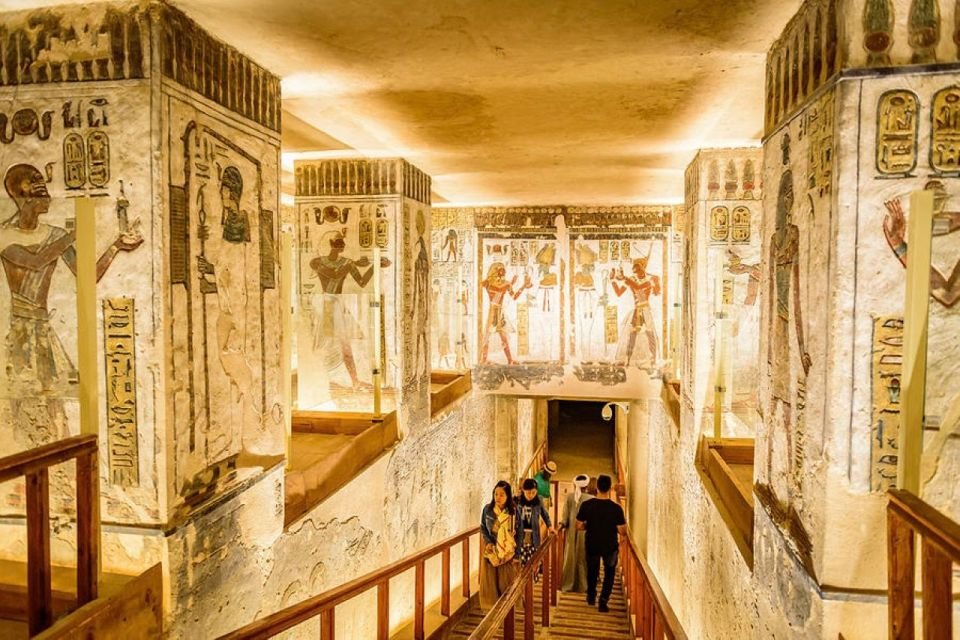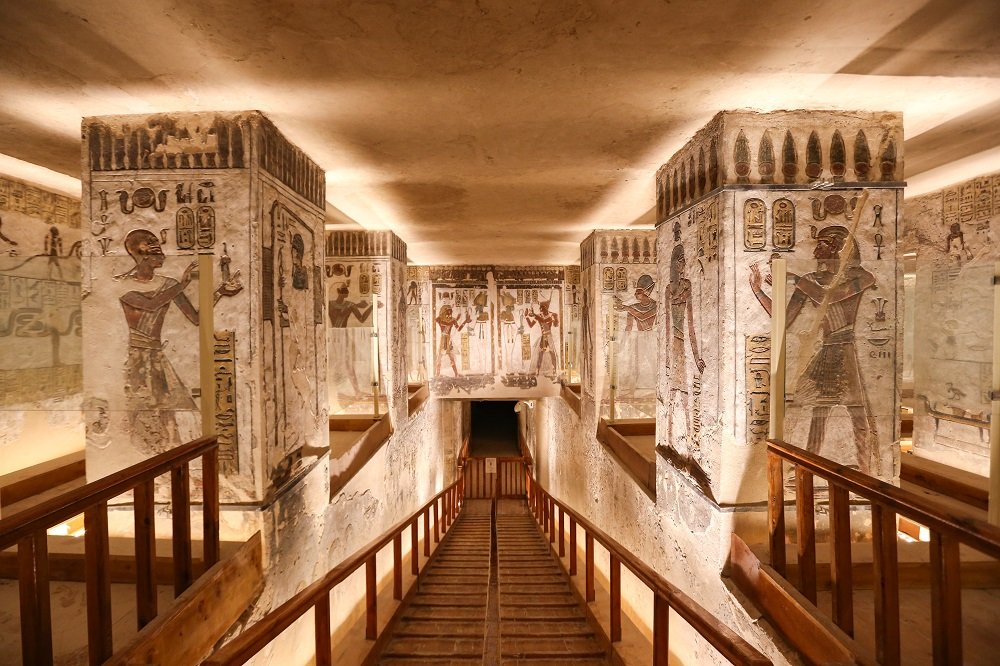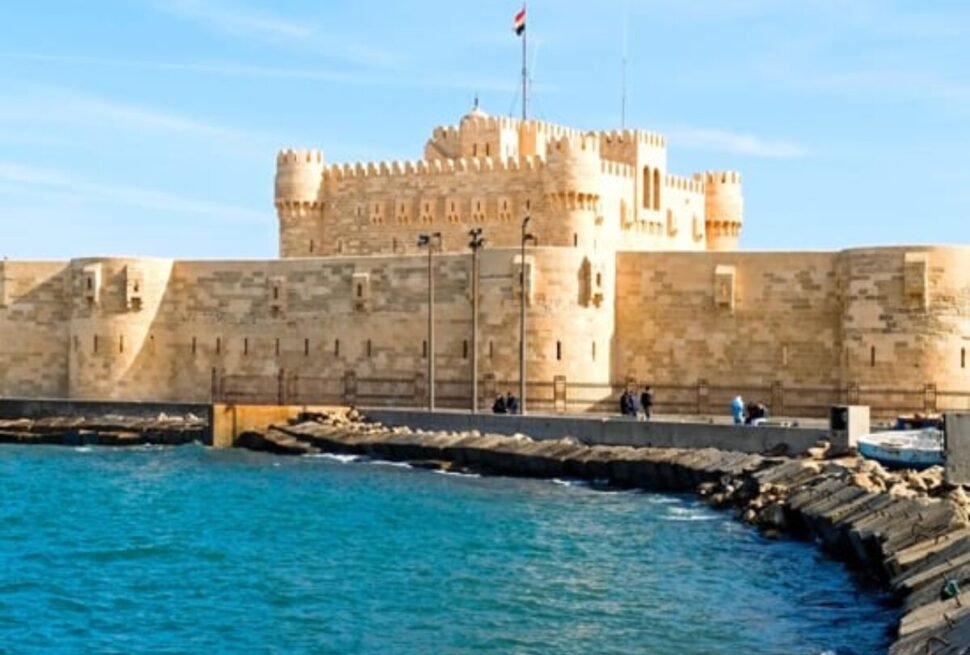The Valley of the Kings in Luxor lies on the west bank of the Nile and is perhaps one of the most symbolic and mysterious sites in ancient Egypt. The valley acted as a burial site for pharaohs and eminent nobles of the New Kingdom (c. 1550–1070 BCE) and houses more than sixty tombs deeply carved into the desert cliffs. Unlike the grandeur of earlier dynastic pyramids, these concealed tombs were designed to hide the dead and their treasure en route to the afterlife. An elaborate system of religious texts and murals adorn these hidden tombs, and the Valley offers a view of ancient Egyptian religion, art, and the attempt to secure eternity.
Valley of the Kings is located of :
The Valley of the Kings in Luxor lies in Upper Egypt, west of the Nile River, facing the modern-day city of Luxor, formerly the ancient city of Thebes. The valley, concealed amidst the barren cliffs of Theban Hills, lies in an isolated desert space chosen for its symbolism and practicality. Opening into a western sky that meant the land of the dead in ancient Egyptian mythology, the valley was an apt abode for royal burials. The western desert was far away from the ease of travel, giving potential natural prevention from tomb robbers; isolations also enabled carving large tombs into the soft limestone bedrock out of sight.

Architecture and Tomb Design in the Valley of the Kings in Luxor
The tombs in the Valley of the Kings in Luxor are more than burial places—they are gateways to the afterlife, filled with symbolism, mythology, and celestial art
The architecture and design of tombs in the Valley of the Kings served a purpose beyond burial; they were well-planned spiritual paths meant to ensure the safe passage of pharaohs to the afterlife. Constructed from the 16th to the 11th century BCE, the tombs are the pinnacle of architectural skill and profound religious significance of ancient Egypt.
Layout and Structure
The royal tombs, in contrast to their predecessors, were excavated out of the limestone cliffs of the Theban Hills themselves. Each tomb typically had a long, sloping corridor leading down to one or more chambers, terminating in the burial chamber itself.
The architecture and design of tombs in the Valley of the Kings were not merely for burial but were intricately designed spiritual experiences meant to ensure the pharaohs’ safe entry into the afterlife. Constructed between the 16th to 11th centuries BCE, the tombs are a testament to the architectural prowess and profound religious significance of ancient Egypt.
Valley of the Kings: Layout and Structure
The royal tombs, in contrast to those that preceded them, were sculpted directly out of Theban Hills’ limestone cliffs. A sloping corridor of considerable length to one or more chambers and terminating in the burial chamber to each tomb there was.
Valley of the Kings Common features include:
shafts designed to thwart tomb robbers
antechambers for offerings or symbolic rituals
burial chambers adorned with elaborate scenes from funerary texts such as the Book of the Dead or Amduat.
Valley of the Kings Symbolism in Design
The design of the tombs often mirrored the journey of the sun god Ra through the underworld, symbolizing a path from darkness to light, which represented the pharaoh’s anticipated rebirth and union with the divine. Architectural symbolism was evident in features such as ceiling stars that depicted the night sky and cosmos, guardians and deities carved into the walls for spiritual safeguarding, and hieroglyphic inscriptions that functioned as magical spells to assist the soul.
Valley of the Kings Art and Engineering
The interiors were intricately painted and sculpted, employing natural pigments and chiseling methods. Remarkably, many of these artworks have endured well despite the harsh desert conditions, thanks to the concealed, underground nature of the tombs.
Why Visit the Valley of the Kings in Luxor?
The Valley of the Kings in Luxor is one of the most remarkable remnants of ancient Egypt, a desolate and sun-baked terrain concealing the everlasting resting places of pharaohs. Its masterful architecture and deeply symbolic tomb designs provide an unforgettable insight into a civilization that viewed death not as a conclusion, but as a passage to eternity. For history buffs, archaeology enthusiasts, or travelers yearning for a profound connection to humanity’s ancient heritage, the Valley of the Kings is an essential destination.
No Egypt tour is truly complete without exploring these grand tombs and confronting the 3,000-year-old enigmas etched in stone. Now with Step to Egypt A visit to the Valley of the Kings in Luxor offers an unparalleled chance to walk through history, experience royal burial chambers firsthand, and witness ancient Egyptian beliefs in eternal life.




